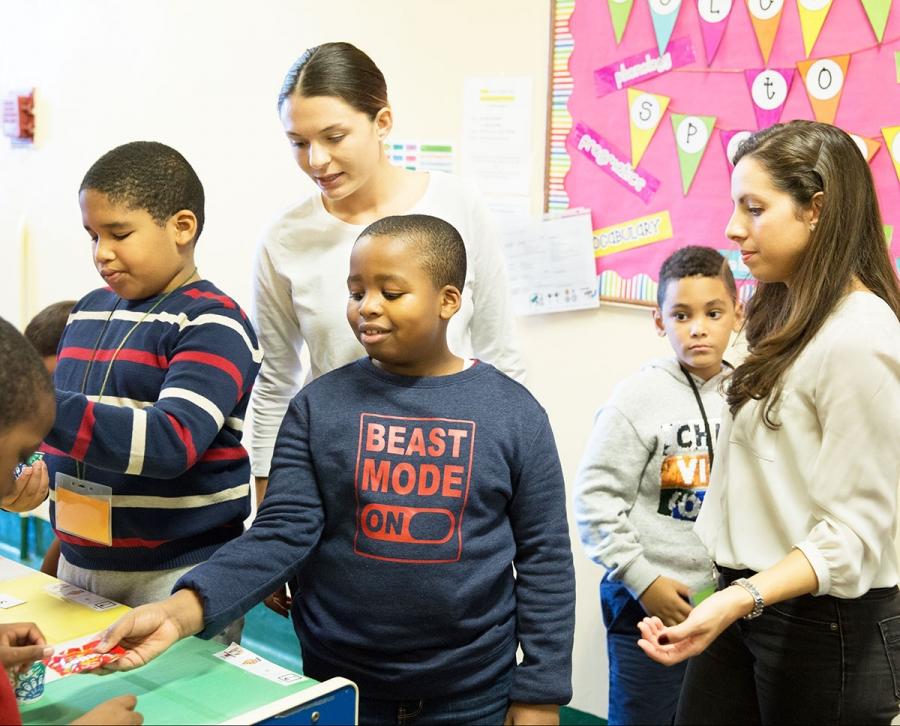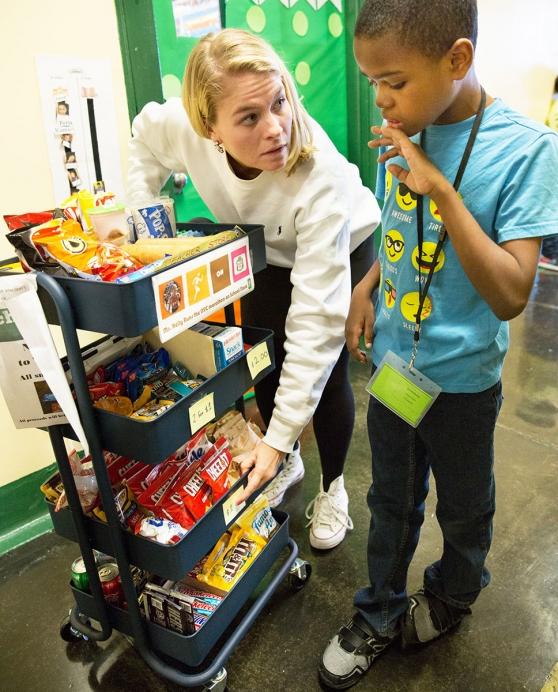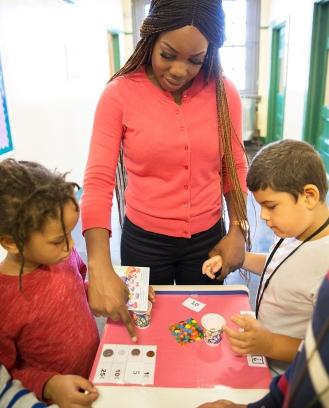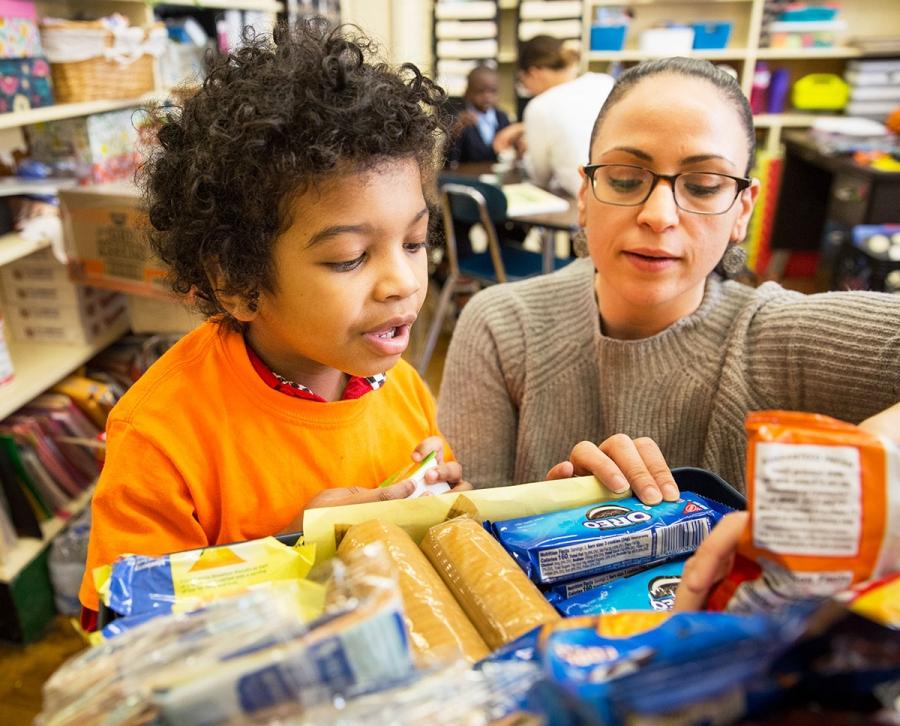Who doesn’t enjoy an early morning snack? For the special needs students at P352 @ PS 595 in the West Bronx, it’s a chance to satisfy a craving — but also to learn about commerce, coins and communication.
That’s all by design: Five speech teachers at the District 75 school last spring came up with the idea of using snack carts to guide their K–5 students through an everyday retail experience, as sellers and customers.
“I’ve seen them grow with the increased responsibility,” says speech teacher Gina Lattari. “The students are learning math, language, social skills, basic concepts and so many more skills without feeling like they are doing work, and they are learning these skills in a real-life application.”
Each week, some students stock the carts with cookies, crackers, potato chips, pretzels and candy, while other students fill paper cups with coins for classmates to use to make their purchases. Teachers raided their own coin jars at home so each student could have 41 cents to shop with: a quarter, a dime, a nickel and a penny.
Small laminated pictures of each snack are attached with Velcro to the front of the student cart, so a student who is not able to verbalize can lift the picture from the cart and hand it to the student behind the counter. Some students have devices to help them express themselves. A laminated guide sits on top of the cart to help students identify the coins in their cups. Younger students are asked to match the coins to the pictures but there is no set price for snacks, while older students might be asked to pay a specific amount to test their counting skills, said speech teacher Laura Garcia.
A second cart is stocked just for teachers, who purchase snacks at $1 an item with their own money, which helps to pay for the project.
The snack cart is open three times a week. On Mondays and Wednesdays, students roll the carts to the classrooms, enabling nearly 200 students in the school to participate as customers. On Fridays, between 10 and 11 a.m., students and teachers come to the carts, set up at the end of a hallway, to make their purchases. A shift change at the half hour on Friday enables a second group of students to sell and purchase snacks. To manage traffic at the snack counter, students take turns using a board that slides from a red “stop” sign to a green “go” sign.
On a recent Friday morning, business was booming as about 30 students filled the hallway to buy and sell the candy. “The students are really excited about the snack carts,” said Chapter Leader Tameka Solomon. “They have taken charge of it.”
When the snack cart is out, each student collects a fresh cup of coins at a desk staffed by a fellow student, explained speech teacher Oluwa Funke Jones. Those who can’t verbalize the request for a cup of change push a big red button on the desk. All the coins recirculate for the next day’s purchases.
“For the kids who have trouble interacting, it gives them a platform to communicate, especially with visuals,” says speech teacher Megan Burke. “It increases their independence, even with the simplest of actions: ‘If I give this money, I get this snack.’”
Students are also learning to interact with each other in a mature way, making eye contact and greeting customers. “I always try to stress using ‘sir’ and ‘madam’ instead of just asking ‘What do you want?’” says speech teacher Kelly Karpus. “It’s about manners and respect. When they say ‘Thank you’ and ‘You’re welcome,’ we praise them.”
Garcia says the speech teachers are noticing a difference in the students since the snack carts opened for business. “They have more patience when they’re waiting their turn to make a purchase,” she says. “They’re pulling up the pictures of the items from the front of the cart and getting better at matching coins.”
Lattari says the activity also has enhanced the collaboration among the speech teachers.
“We, as speech therapists, have also been improving,” she says. “Every week we meet and discuss what changes we can make to better the store and make it more seamless and to target educational and speech and language goals for our students. The school store has become something we are all proud of, and everyone is happy to be a part of it.”



